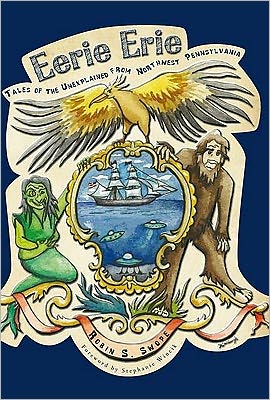 Clodia's Great-Grandfather fought for Napoleon Bonaparte in the Egyptian Campaign of 1798-1801. Like many who served in the emperor's Armee de Orient Clodia's Great-Grandfather vandalized and plundered many of ancient Egypt's monuments and artifacts. Like other warriors throughout time, many soldiers of Napoleon's Armee de Orient took home souvenirs. The most popular being the mummy. Most were the crudely mummified peasants or workers of Egypt's wonderful monuments. So common was the practice that it became a popular rage in 19th century Europe to ingest the ground up corpse of an Egyptian mummy as a remedy for various ailments or as an aphrodisiac. Clodia's Great-Grandfather, being a common foot soldier could not carry much, so the only artifact he was able to smuggle out of the country was a small head of a mummy. For years he proudly displayed his war time trophy, his grand children often gathering around the family hearth to hear his fanciful stories of the orient and cower in fear of the revolting head on the mantle. Sometimes, Clodia's father told her, it seemed as if the head turned or moved as if it was still alive and listening intently to the stories of the old soldier.
Clodia's Great-Grandfather fought for Napoleon Bonaparte in the Egyptian Campaign of 1798-1801. Like many who served in the emperor's Armee de Orient Clodia's Great-Grandfather vandalized and plundered many of ancient Egypt's monuments and artifacts. Like other warriors throughout time, many soldiers of Napoleon's Armee de Orient took home souvenirs. The most popular being the mummy. Most were the crudely mummified peasants or workers of Egypt's wonderful monuments. So common was the practice that it became a popular rage in 19th century Europe to ingest the ground up corpse of an Egyptian mummy as a remedy for various ailments or as an aphrodisiac. Clodia's Great-Grandfather, being a common foot soldier could not carry much, so the only artifact he was able to smuggle out of the country was a small head of a mummy. For years he proudly displayed his war time trophy, his grand children often gathering around the family hearth to hear his fanciful stories of the orient and cower in fear of the revolting head on the mantle. Sometimes, Clodia's father told her, it seemed as if the head turned or moved as if it was still alive and listening intently to the stories of the old soldier.Until 1922 when Howard Carter discovered the tomb of the boy king, Pharaoh Tutankhamen. The public attention to the discovery unleashed an unprecedented interest in Egyptology, and soon Ancient Egyptian decor and collecting 'artifacts' became the popular vogue. It became stylish to adore your house with an Egyptian motif accented with artifacts, real or fake. It was at this time when Clodia remembered all the hand me down stories of her Great-Grandfather and his adventures in the Egyptian Campaign. And she remembered the mummy's head.
It was smaller than she expected, about the size of a cantaloupe. Although there were some ancient cloth still attached to the skull, most of the face was uncovered. With empty eyes and no nose the cadaver's head was gruesome, but knowing that it had come from the time of the Pharaohs quelled any loathing she instinctively had for the object and instead instilled her with awe and wonder. With her Grandmother's blessing, she took the head home to her flat in Montoire and placed it on her bedroom dresser. She took the remainder of the day lying on her bed and staring at the gruesome artifact. Her mind wandered, imagining who the person was and what his or her world was like all those millenia ago. Her new decoration was the floodgate of inspiration.
But that night the disturbing dreams began.
Clodia dreamed she was in a dark room, which smelled of rotting flesh and waste. A door opened, and three men came into the room. Two of them were enormous muscular men, carrying some kind of staff or large club. the other was between the two adorned in some sort of robe. It was this small one who spoke, and as he did the large men started to beat her. And in the mixture of their laughing and her screaming she violently awoke, covered in sweat.
Over the course of that week she had the same dream every night, however the imagery became more distinct and vivid. And she no longer awoke with the beginning of the beatings, she endured them all. Each nights dream seemed to add more to the drama, and soon she found herself tied to a stone table with the thin man placing jars around her and holding some crude instruments. Then he took out a long jeweled knife and started to cut her abdomen open.
She woke up screaming that night, for she felt every blow and the horror of the cold metal cutting her open. She quickly pulled aside her blankets and night dress to make sure she was in one piece, only to find a long scratch down her belly where she had dreamed the knife opened her. A chill ran down her spine as she felt reality merge with the dream world. But her nervous hysteria only escalated when she noticed the mummy's head was no longer on the dresser where she usually kept it. It was sitting on her night stand, vacant eyes open as if it were piercing her mind. And most terrifying and impossible to Clodia, it seemed the face had changed.
The face seemed to have a grin that was never there before.
So disheveled by the entire incidents, Clodia took her prized Egyptian relic and put it in a small shed behind her building.
But she did not experience relief from the nightmare's that evening. In fact they seemed more intense and real, more than ever before. She endured the beatings and the disembowelment as if it was happening to her. The robed man took out her organs and put them in small jars. It was then that she understood. She was reliving what must have happened to the mummy. She was some sort of servant girl being mummified alive. But her consciousness endured for longer than seemed possible. With vital organs removed, she should have succumbed to the darkness of death. But she remained conscious through the horrible rite. Experiencing everything. The man who she now recognized as an Egyptian priest moved turned her face with a long hooked instrament, with a quick twist of his wrist he shoved the utensil into her nose and started to dig.
Clodia awoke covered in blood. It was a horrible nose bleed that turned her white cotton sheets a dark crimson. She dashed to the bathroom to stop the bleeding and clean herself up. Crying and shaking she entered her bedroom to change her bed clothes, and through tear blurred eyes she saw something that shattered her world of rational thought.
The mummy's head was on her night stand again. And the head seemed to be turning on its own toward her.
Still covered in blood, she ran from the apartment, blindly making her way to her parents home some miles away. After telling her parents of her horrible ordeal, Clodia's father took the head and burned it in a field far away from any of the family. He also made his daughter move back in with the family, so she would make a clean break with any association with the nightmares of that flat.
Clodia never mentioned the mummy's head or the nightmares to anyone, for fear they would think her mad. Until the 1970s, when the tout of King Tut brought Egyptology to the forefront once more. The nightmares returned, though not as vivid. It was if she was reliving the horror she experienced in the 20s once again. Clodia sought out help from a friend and she was referred to a Christian Counselor who helped her deal with her memories through therapy and hypnotism. The nightmares ceased, and the horror of the mummy's head faded into history as peace through grace quelled Clodia's fears.
Now as when I first heard the story in a small group with the counselor who ministered to Clodia, I cannot help but wonder if Clodia was imagining the paranormal activity surrounding the mummy's head. But after years of witnessing strange unexplained experiences myself, the story seems all the more chilling. What was the purpose of the dreams? Was the disembodied spirit of that long dead servant trying to reach out in sympathy to what it understood as a kindred soul, or was something more sinister happening? Were Clodia's wounds psychosomatic or a paranormal phenomena pointing to some diabolical plan at work?
Until Next time,
Pastor Swope










